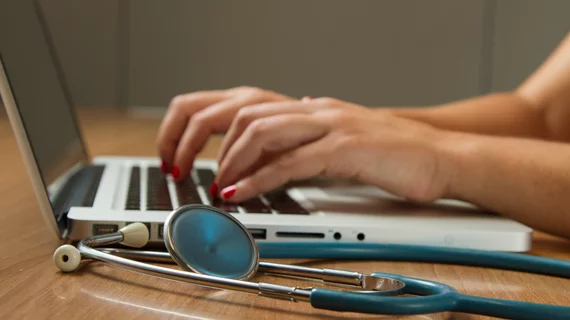Study analyzes use of AI to alert patients, physicians to incidental imaging findings
A new NEJM Catalyst study examined Northwestern Medicine’s use of artificial intelligence to alert patients and ordering physicians to incidental lung findings in radiology reports.
Aiming to prevent delayed or missed care, the internally built AI system uses natural language processing to screen signed reports for any text that indicates a follow-up recommendation. Within three minutes of the report’s signing, the system scans the radiologist’s write-up, adds any positive findings into the patient’s electronic health record, and sends an alert to the ordering physician.
The system went live at Northwestern Medicine in December 2020, and the Catalyst study analyzed 13 months of subsequent data detailing the screening outcomes of more than 570,000 diagnostic imaging studies. The results show that the AI system flagged 5% of those imaging studies as containing lung-related follow-up recommendations—an average of 70 reports per day. Positive predictive values were also high, at 90% of reports with lung findings requiring follow-up.
“Our data shows just how common these incidental findings are in diagnostic imaging studies and further supports the need to find a scalable solution,” Mozziyar Etemadi, MD, PhD, medical director of advanced technologies at NW, said in a statement.
Following the alert notification, which also includes the radiology report text, the physician is presented with a “place follow-up orders” link to order a relevant, pre-suggested follow-up—such as a chest CT scan with contrast for an alert about lung findings. Alternatively, the physician can select a reason to refrain from recommending a follow-up action and close out the workflow.
As an added layer of safety, the patient in question will receive a MyChart letter seven days later. The letter informs them of a finding that potentially requires follow-up action and asks them to reach out to their physician if they haven’t already been in touch about the findings. If the patient does not have an active MyChart account, they receive a letter by mail at their current address on file.
Ultimately, the alerts through the electronic health record-integrated workflow resulted in nearly 5,000 physician interactions over the 13 months observed. More than 2,400 follow-ups were tracked through completion.
While noting future potential to improve process implementation even further, the study’s authors conclude that “prospective clinical evaluation of the [natural language processing] models confirms the potential of AI to provide demonstrable clinical impact.”
That impact can benefit not only patients, but hospitals and health systems across the nation—which spend an estimated $43 million annually on settlement costs related to missed follow-ups on lung findings, according to Northwestern Medicine.
The study also notes that at no point is the AI system making clinical decisions, acknowledging that this is a common misconception. The system simply directs the ordering physician’s attention to comments that were written by the radiologist. The streamlined workflow then makes it easier for ordering physicians to request follow-ups as they see fit.
“The result management implementation of clinical AI highlights the utility of AI to facilitate physician decision-making and impact patient care by streamlining burdensome workflows, supporting rather than displacing the physician,” the authors wrote.
